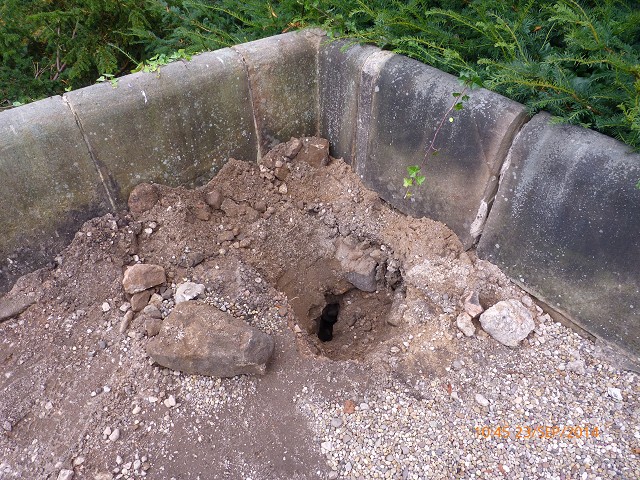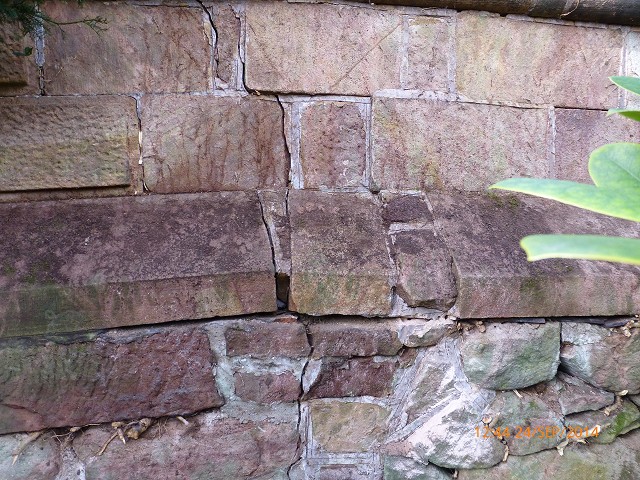Biddulph Grange Bandstand
Epoxy glass rods and resin rescue slumping historic bandstand
 Biddulph, not far from Congleton, is the home of one of the countries’ most interesting gardens; in scope they span the world with specimens bought in by Mr. Bateman whose father who had accumulated a fortune from coal and steel in the early 19C; Bateman Junior moved to the Grange from Knypersley Hall and began to indulge his passion for gardens and plants and luckily his wife was also keen. The story is vividly told in NT web sites.
Biddulph, not far from Congleton, is the home of one of the countries’ most interesting gardens; in scope they span the world with specimens bought in by Mr. Bateman whose father who had accumulated a fortune from coal and steel in the early 19C; Bateman Junior moved to the Grange from Knypersley Hall and began to indulge his passion for gardens and plants and luckily his wife was also keen. The story is vividly told in NT web sites.
A feature of the garden is a bandstand, unfortunately built on a slope and with precious few foundations; over time the retaining wall has moved, monitoring highlighted the acceleration in the slumping and we were invited to tender for the all too necessary stabilisation project.
On the platform - a good viewing point for guests - was a scattering of gravel underfoot, covering a packed earth base and this meant surface/rain water was able to trickle-in to the back of the retaining wall and so add more pressure on the retaining wall; no wonder it got tired!
So, here’s a structure bellying-out like a Victorian lady loosening her corset which had to be saved for the future; how was this accomplished?
Bencon 24 epoxy / glass rods and Benepox 40 cartridge resin adhesive
 Specially commissioned, (two of them, 2000 x 16mm and costing £840), long reach masonry drills were employed to allow us to stitch the side walls to the front elevation using Bencon 24 epoxy/glass rods firmly bonded into position with Benepox 40, a cartridged adhesive pumped into place using a pneumatic powered gun before introduction of the rods. This method of delivery ensured perfect resin to hardener metering and mixing with the added advantage of being both clean to use and quick to apply.
Specially commissioned, (two of them, 2000 x 16mm and costing £840), long reach masonry drills were employed to allow us to stitch the side walls to the front elevation using Bencon 24 epoxy/glass rods firmly bonded into position with Benepox 40, a cartridged adhesive pumped into place using a pneumatic powered gun before introduction of the rods. This method of delivery ensured perfect resin to hardener metering and mixing with the added advantage of being both clean to use and quick to apply.
Major bursting of the walls, where indicated by the Consultant Engineer, was fixed with the same resin and adhesive combination; the joint lines were cleared of mortar, dust, earth and cob-webs. The mixed adhesive was piped into the gap; a long Bencon rod was pushed into this bed of wet resin and more adhesive then covered the rod so making a “mini-beam” which we have employed on similar projects for many years.
Now it was up to us to pin the wall back into the packed earth slab and rather than going to the expense of purpose made tie rods we drilled through the face of carefully selected stones and on deep into the platform slab with the drill shaft being seen running within shallow trenches we had dug earlier. The rods were now drawn back and treated to the Bencon 40 adhesive before being pushed through to their final bed; stainless steel rods were now driven into the top at right angles to the resin/glass ones and the two laminated together with epoxy resin and glass tape; the joint was further reinforced by the moulding of a lightweight epoxy dough to cover the laminate.
Any holes we had drilled had room for now were sealed using the lightweight system and finally, repointing over our mini-beams completed the job. Oh, apart from re-spreading the platform gravel layer!
